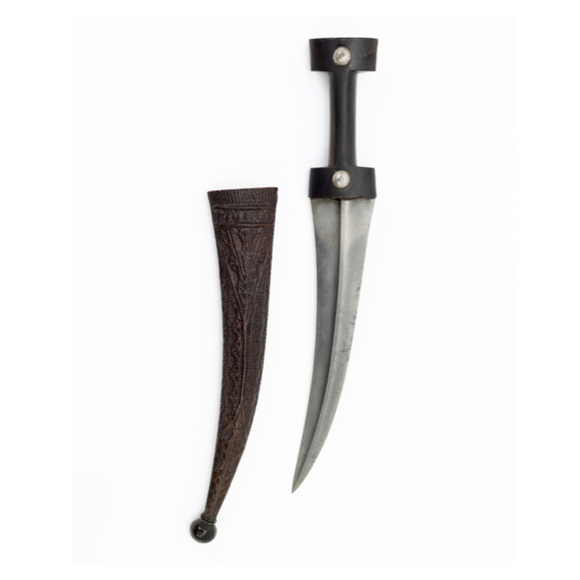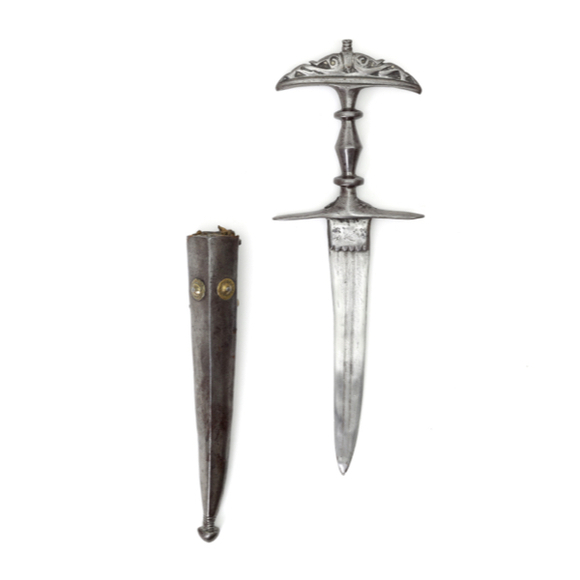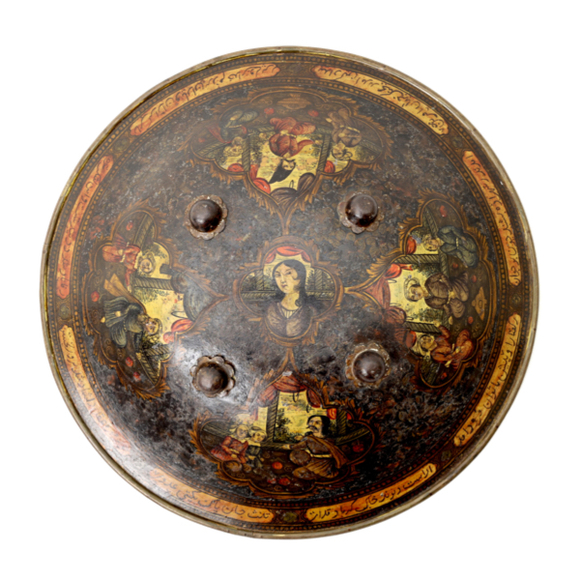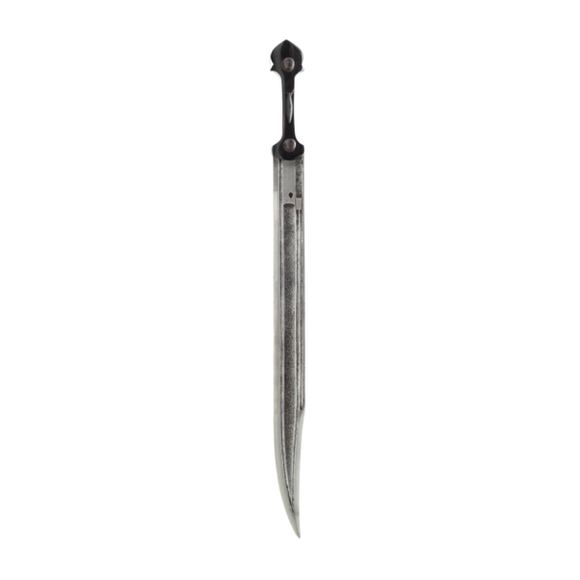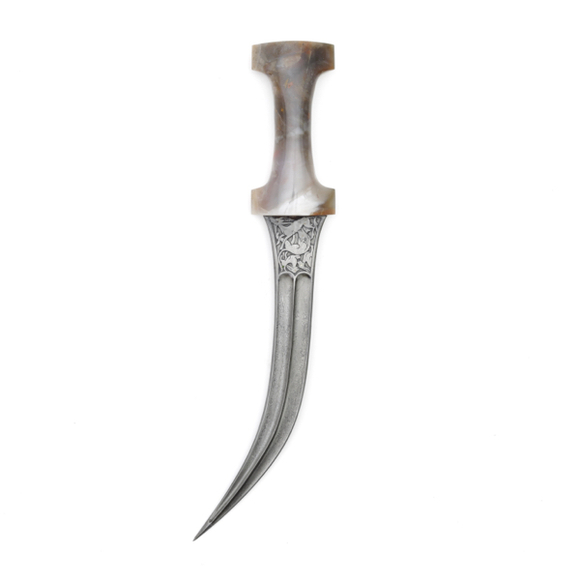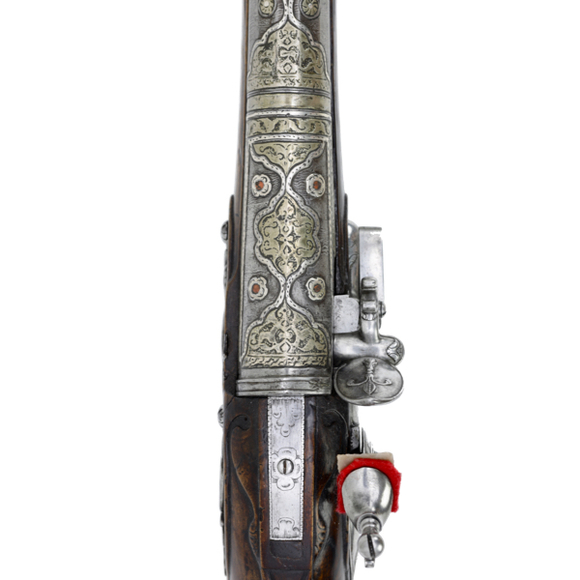Language: Persian
Source: Classical literature
Kard (Persian: کرد ) daggers are characterized by having fairly straight thrusting blades, some with extra reinforcement at the tip, to strengthen this piece for stabbing through heavier protection. When sheathed, part of the handle goes into the scabbard.
Such daggers are found in most of the Islamic world, from Ottoman Turkey to the Caucasus, into old Persia, Sindh, and North India.
Some of the finest examples were made in Persia. The better examples have wootz steel blades, hilts of precious materials, and fine chiseled decoration.

A fine Persian kard dagger of the 18th century with walrus ivory grip, golden inlay and fine chiseling on the wootz blade.
Metropolitan Museum of Art, accession number 36.25.1043a, b

Same dagger, seen from the spine. Notice the fine chiseling typically seen on the best examples.

Same dagger, sheathed.
In classical literature
A type of kard appears in the The Ain-i-Akbari (Persian: آئینِ اکبری) or the "Administration of Akbar" of the 16th-century. Here it depicts a somewhat curved, sheathed version with most of the hilt inside the scabbard. It is called gupti kard or "long dagger".
Synonyms
In north India, the kard could also be called churā (छुरा) or churī (छुरी).

